You want to escape into the Peloponnese? Don't miss visiting Mistra, one of the jewels of Greece!
Located in the Peloponnese region, west of Sparte, the Byzantine city of Mistra (or Mystra) is one of the wonders of Greece. Perched on a hill of the mount Taygète, this sublime medieval town of origin was definitely abandoned during the war of independence of Greece (1821-1829).
Today, Mistra la Morte is a ghost town in the heart of a breathtaking natural setting. A characteristic that earned it to be classified as a Historic Monument of World Culture by Unesco. Through your wanderings, you can contemplate its contours, ruins and impressive monuments.
You think you're going to Mistra? So find out our selection of the 7 things to see in Mistra, not to miss anything once on site!
1. The fortress and its ramparts
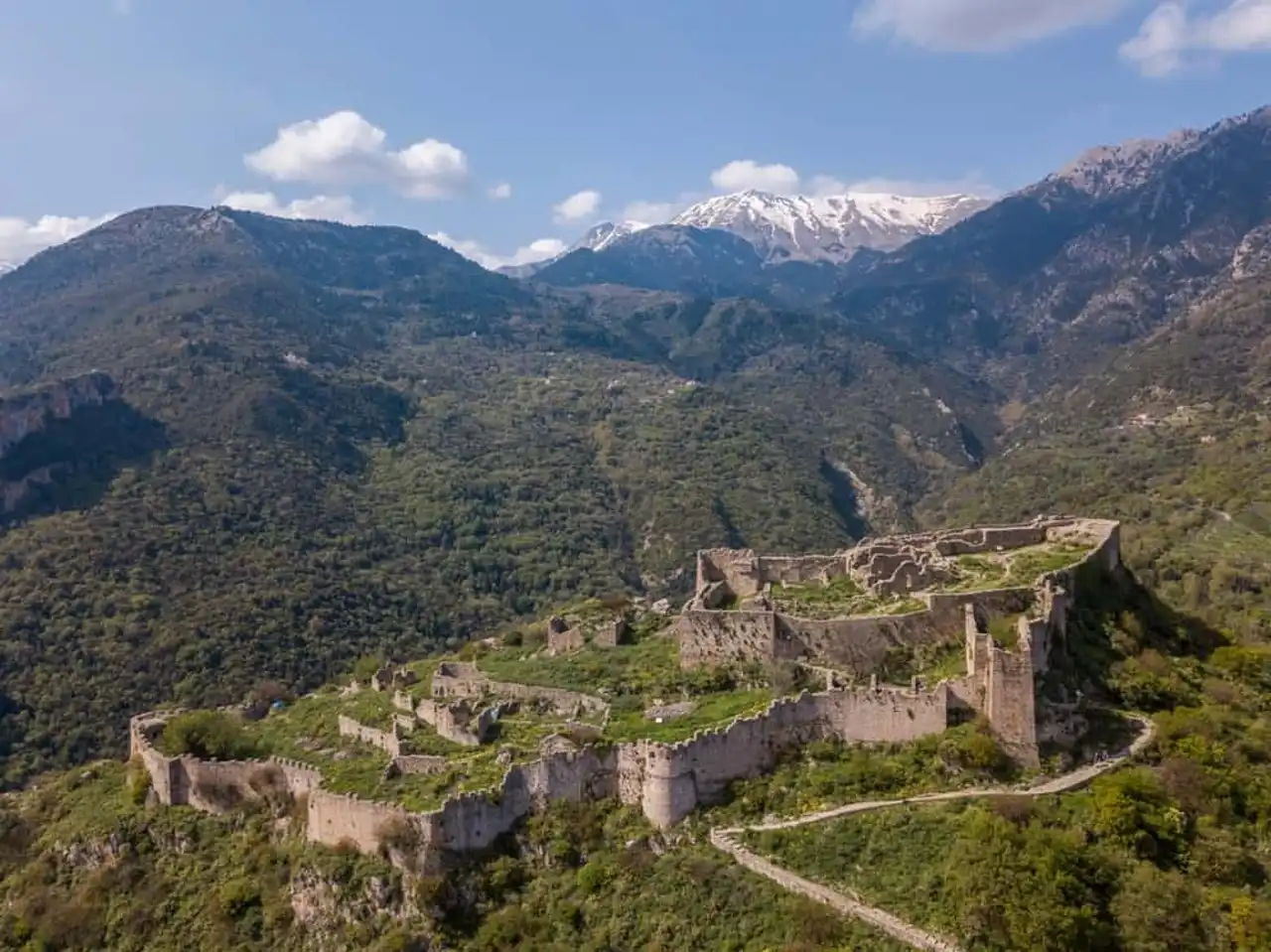
Photo credit: Shutterstock – IURII BURIAK
The fortress of Villehardouin is the impressive castle that dominates the city of Mistra and the plain of Sparte. Edified in 1249 by Guillaume II de Villehardouin , under the occupation of the Francs, it peaks at 620 meters above sea level and has a double enclosure.
As early as 1259, the castle of Mistra changed his hand following the imprisonment of Villehardouin, the lord choosing to redeem his freedom by entrusting the fortress to Emperor Paleologos. Subsequently, the inhabitants of the neighbouring Laconia sought the protection of the new owner and settled on the slopes of the hill, creating the city (Chora) behind the castle walls.
Nowadays, this set can be admired. If you choose to visit Mistra in the summer, just think about having a hat, a bottle of water and good shoes, the place is very exposed.
2. Le Palais du Despote
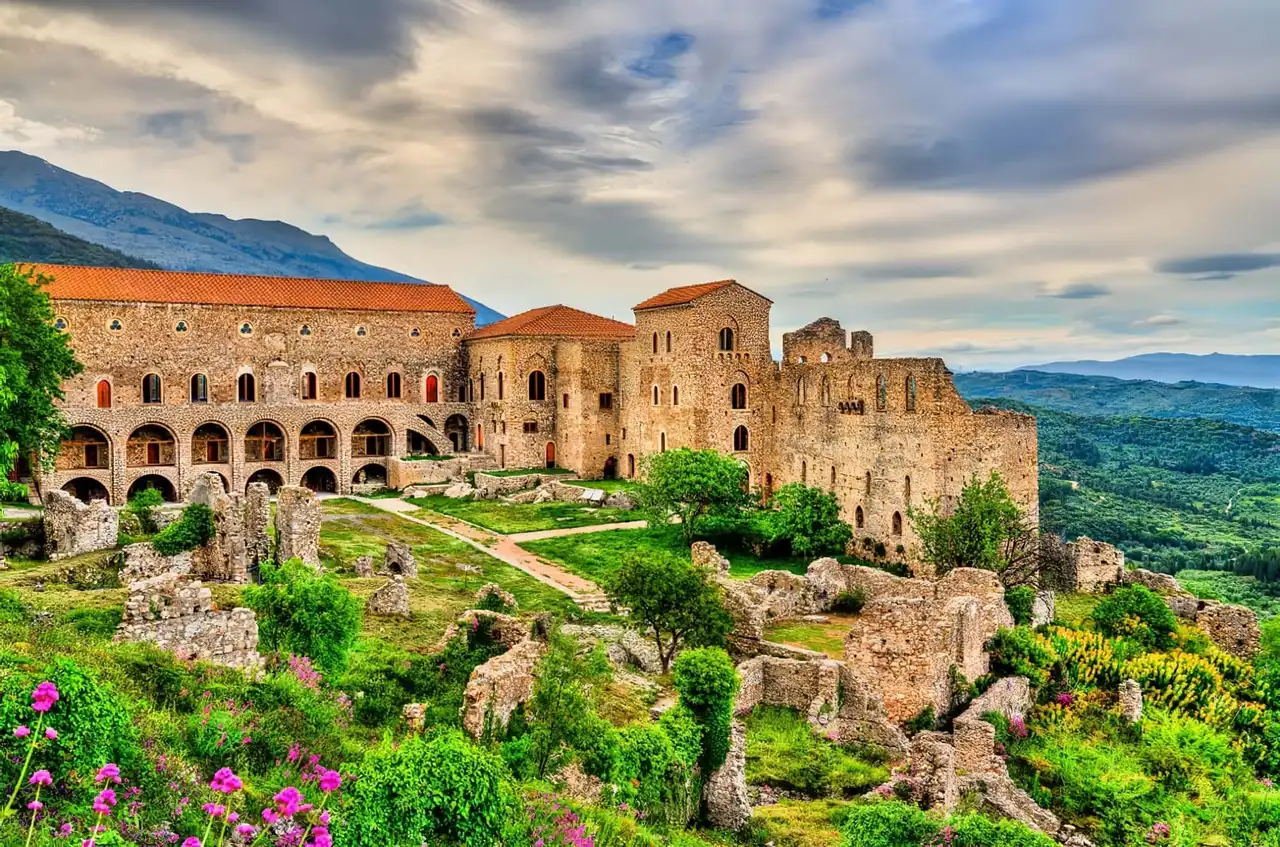
Photo credit: Shutterstock – Leonid Andronov
The Palais du Despote is a condensed in the history of the city and is therefore one of the must-see sites to be discovered. It is established on both sides of an esplanade that once constituted the heart of the city.
On the right, are erected the oldest constructions of the whole, they probably date back to the reign of Guillaume II de Villehardouin (XIIIth century). On the left, buildings are built that date from the reigns of the 14th and 15th centuries.
Well preserved and restored, the Palace is still visible today. During your visit, you can admire the richness of its architectures.
3. Churches and monasteries
The Metropolis of Mistra
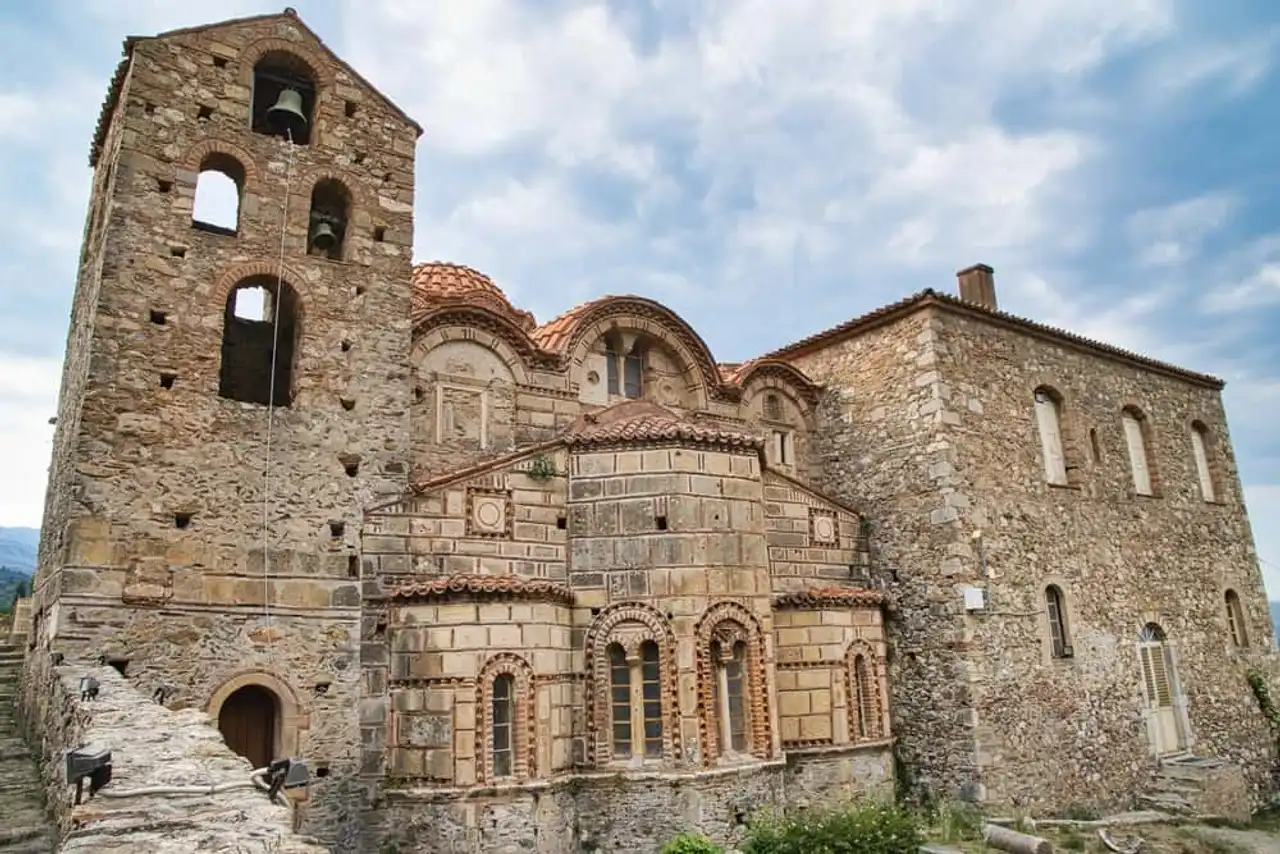
Photo credit: Shutterstock – PetraKub
Visiting Mistra passes through the discovery of his religious monuments. Built around 1240 by Metropolitan Eugene, the Metropolis of Mistra is one of the most important. It was once the seat of the bishopric of the city.
This architectural ensemble features the Agios Dimitrios Basilica and the Episcopal Palace, which has been home to the Mistra Archaeological Museum since 1952. The 14th century frescoes that adorn the arch of the basilica are among the most beautiful in the region.
The Peribleptos Monastery
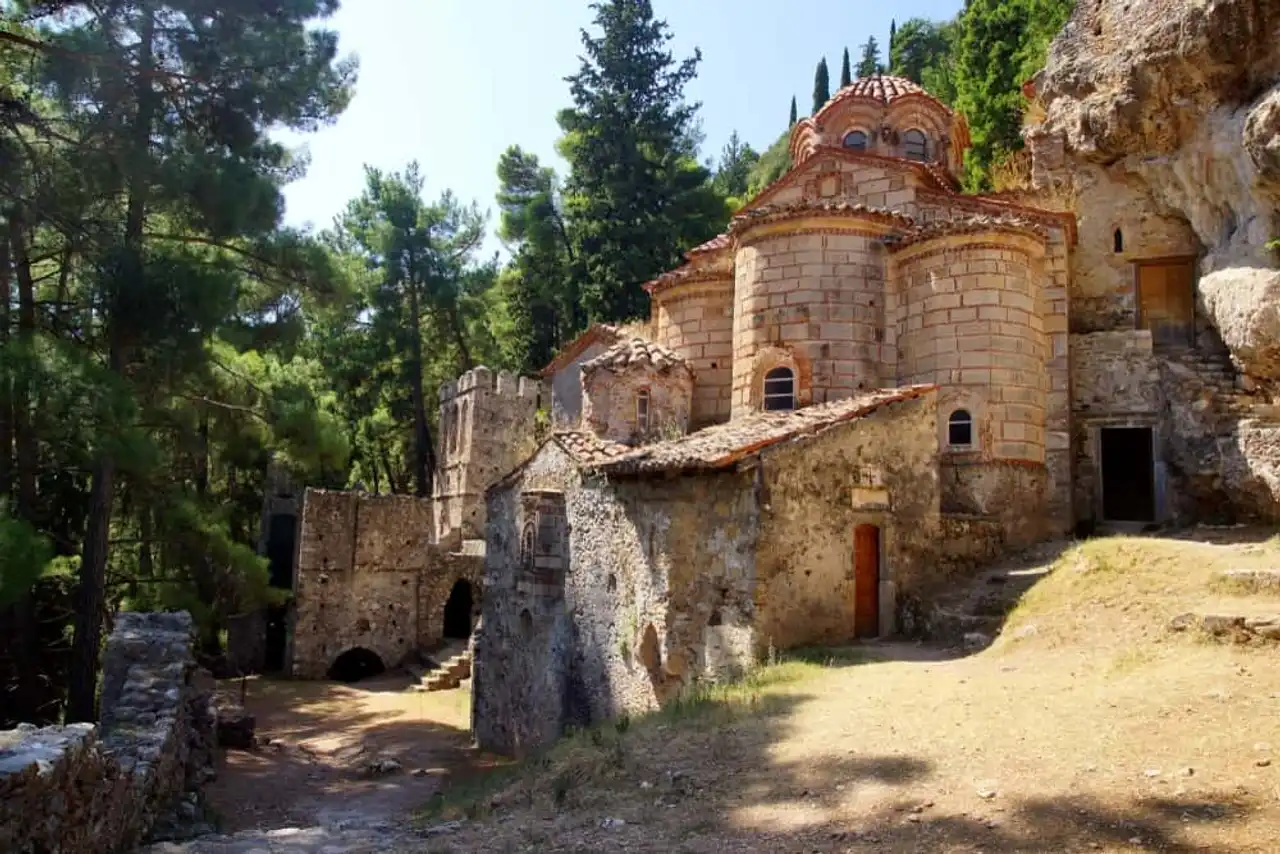
Photo credit: Shutterstock – Thomas Kauroff
In the south of the lower town, the monastery of the Péribleptos houses a church built in the rock. This late Byzantine building was erected in the middle of the 14th century by the first Morée despot, Manuel Cantacuzène .
The frescoes that cover its walls are its main point of interest. Made in the middle of the 14th century, they have picturesque details in relation to the incarnation of Christ. This is a must-see stop to be made in Mistra.
The Pantanassa Monastery
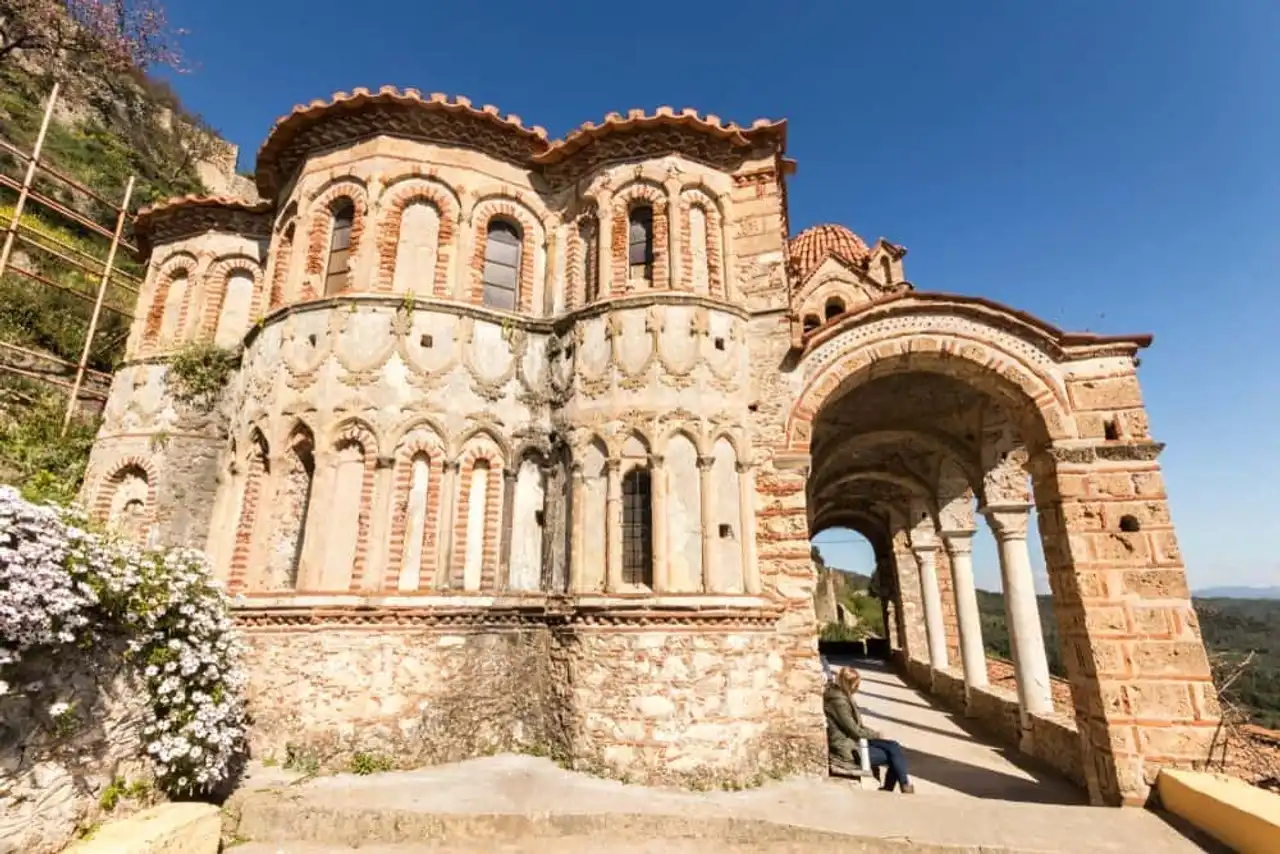
Photo credit: Shutterstock – Joaquin Ossorio Castillo
The Monastery of the Pantanassa, or "Monastery of the Sovereign Virgin", was founded in 1428 by Jean Frangopoulos, minister of the despot of Morée, Constantin XI Paléologue. Nowadays, his cloister is still occupied by half a dozen Orthodox nuns. Located at 425 meters above sea level, it dominates the Sparte plain and has a nice view.
The monastery of Brontochion
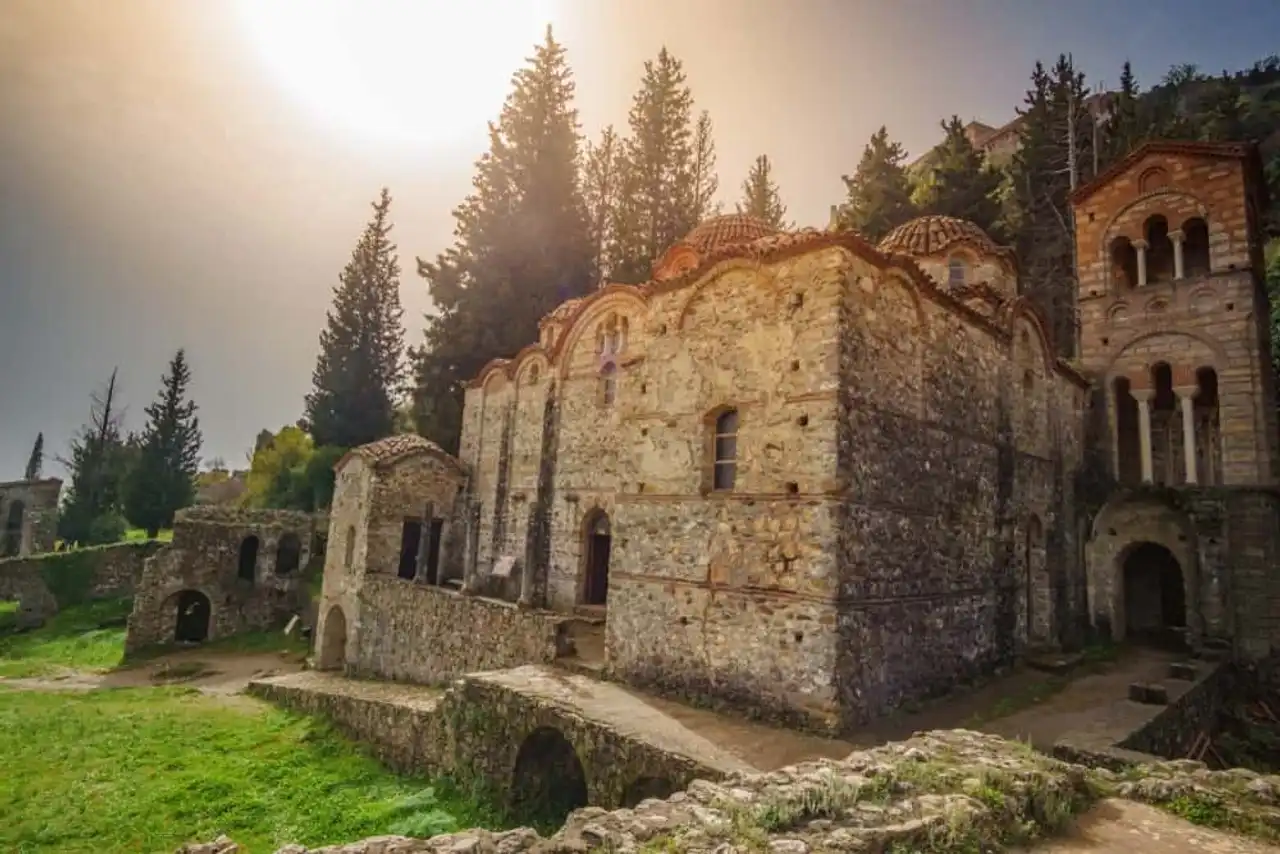
Photo credit: Shutterstock – Pit Stock
At the great epoch of Mistra, this monastery was the cultural centre of the city, and it then welcomed cultural activities and the tombs of the despots.
It houses two churches: Agios Teodoros and Aphentiko. The first has the largest octagonal cross dome of Mistra and pretty paintings, while the second has exceptional frescoes.
The church Agia Sofia
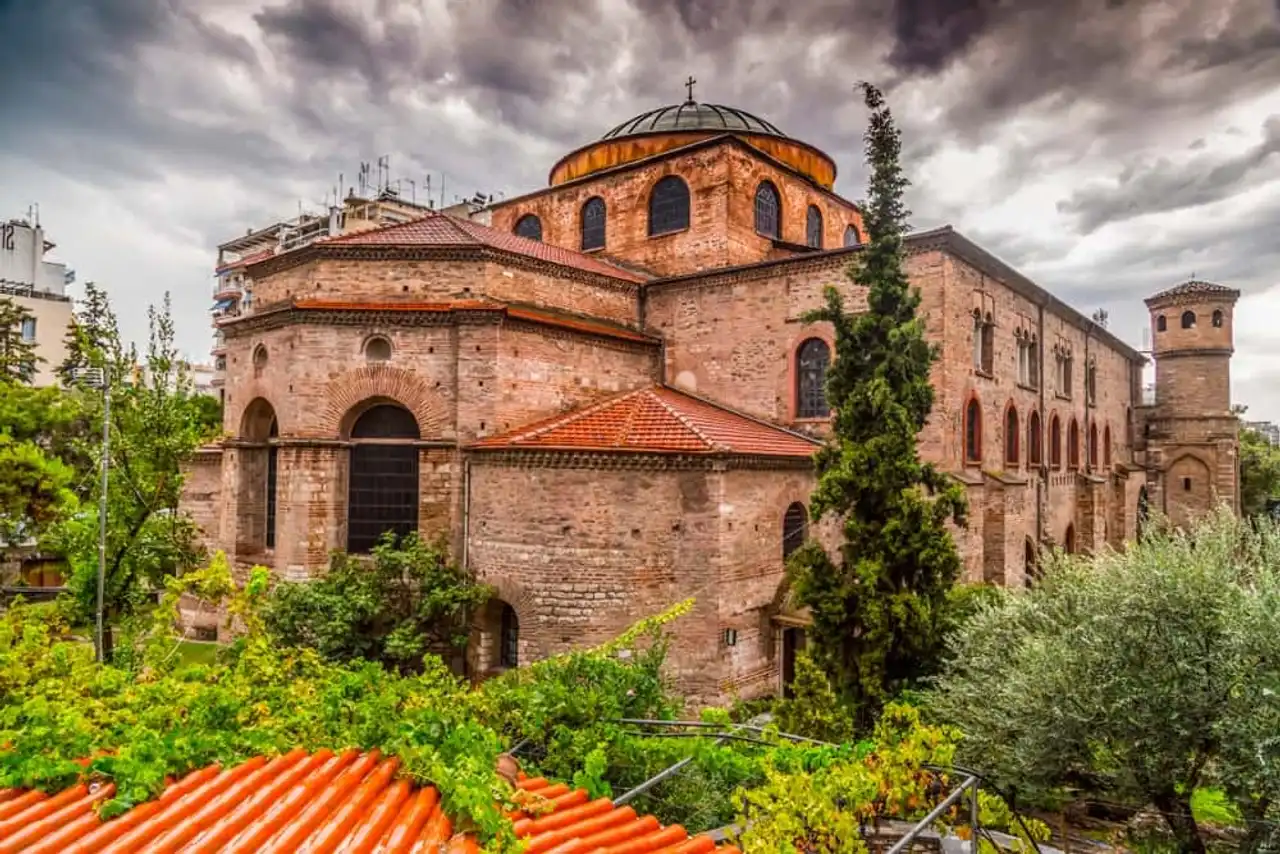
Photo credit: Shutterstock – ColorMaker
A few steps from the Palace of Despote, the Agia Sofia church represents an eminent example of late Byzantine church architecture. It was established in the 14th century by Manuel Cantacuzène, the first despot of Morée. The place also served as a burial place for several Byzantine Empresses.
Later, chapels were added to the building. One of them has kept pretty frescoes that deserve a stop.
4. The Archaeological Museum
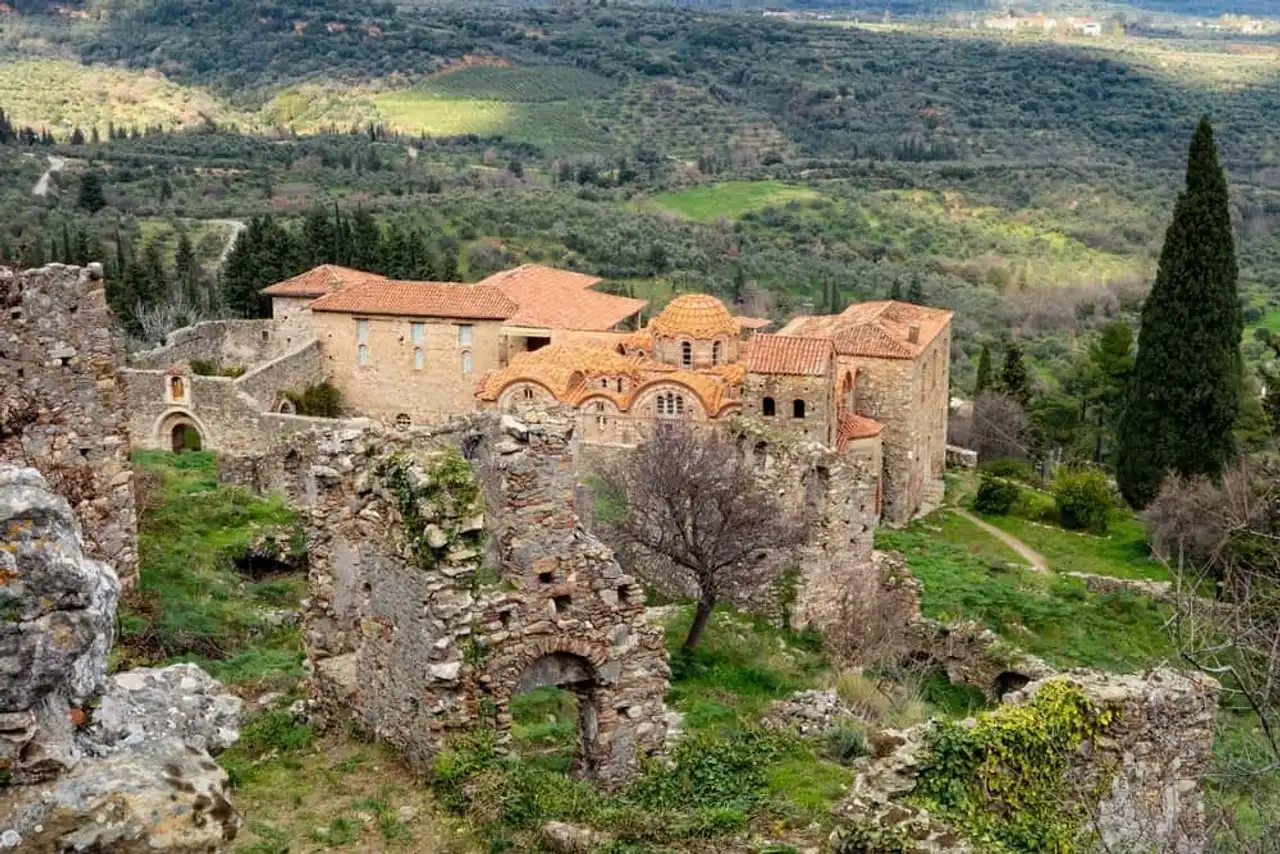
Photo credit: Shutterstock – Mino Surkala
What to do in Mistra to better understand her story? Discover his archaeological museum of course! Founded in 1952, this educational space is housed in the west wing of the metropolis of Mistra. It gathers the results of the excavations carried out in the city, thus exposing vestiges ranging from the beginning of the Christian era to the post-Byzantine era.
In 2001, the museum was transformed to welcome the latest discoveries made on the site. This mutation also allowed to reorganize the permanent exhibition. Today it has a very interesting thematic approach.
5. Medieval houses and residences
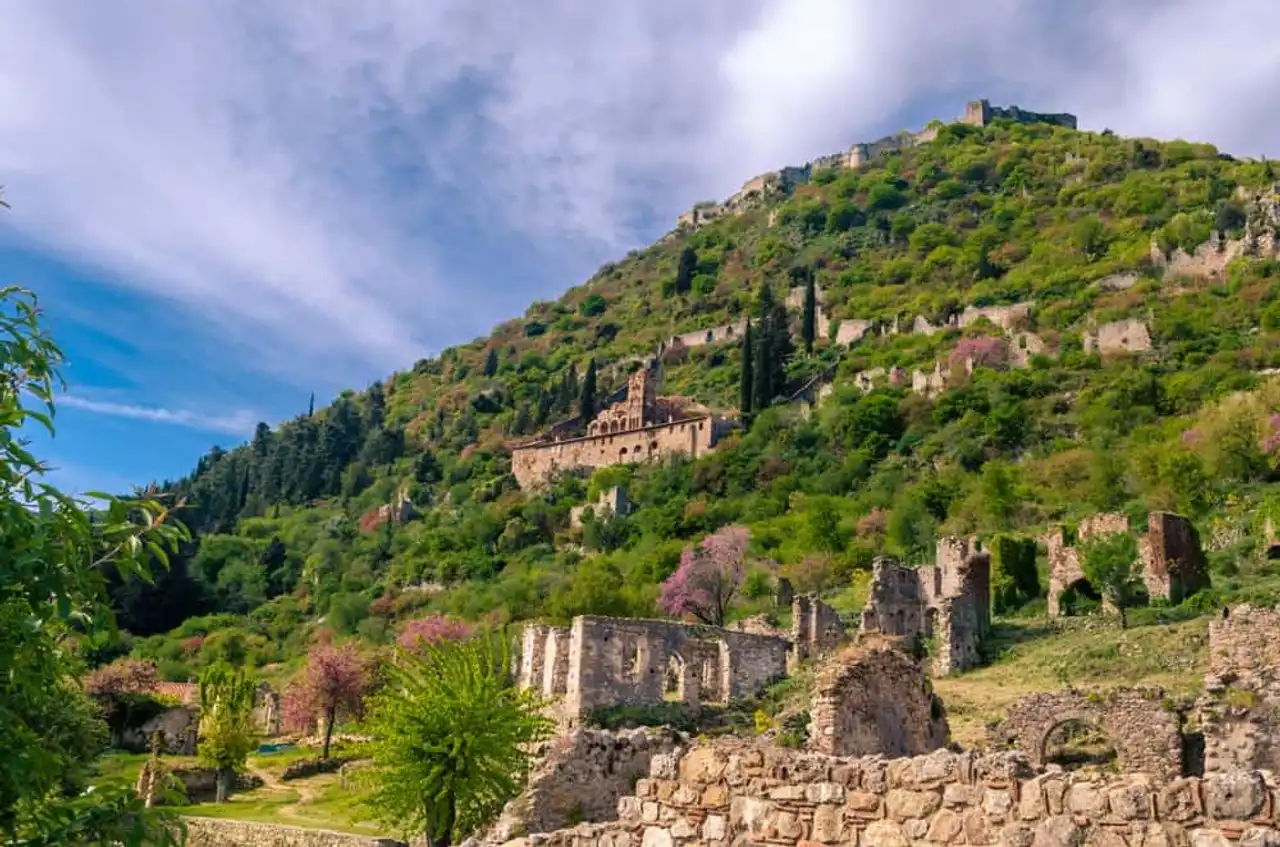
Photo credit: Shutterstock – Georgios Kritsotakis
On the side of the hill that carries Mistra, behind the walls that protected it, the ruins of old medieval houses are still observable. Abmitted by time, there are only stone clusters left of his residences which can only be guessed of the past silhouettes.
A few pedagogical signs will facilitate your work, unless you prefer to rest on your imagination. During your walk you can admire the houses of Laskaris, Palataki and Frangopoulos, which once belonged to influential families of Mistra.
6. Local specialties

Photo credit: Shutterstock – Slawomir Fajer
Visiting Mistra is also enjoying the gastronomy of the Peloponnese region. If the archaeological site does not have a restaurant on its land, several tavernas located nearby will allow you to recover before starting the ascent.
At the table, you can test the ladhera, vegetable dishes in sauce that have won the nickname of "Greek dishes". This speciality is based on a tomato sauce and a delicious local olive oil.
You can also enjoy the grass-rich coconuts in the region. In particular, we think of the veal giouvetsi, a dish concocted in a terracotta cocotte very appreciated by the Greeks.
7. Walk on Mont Taygète
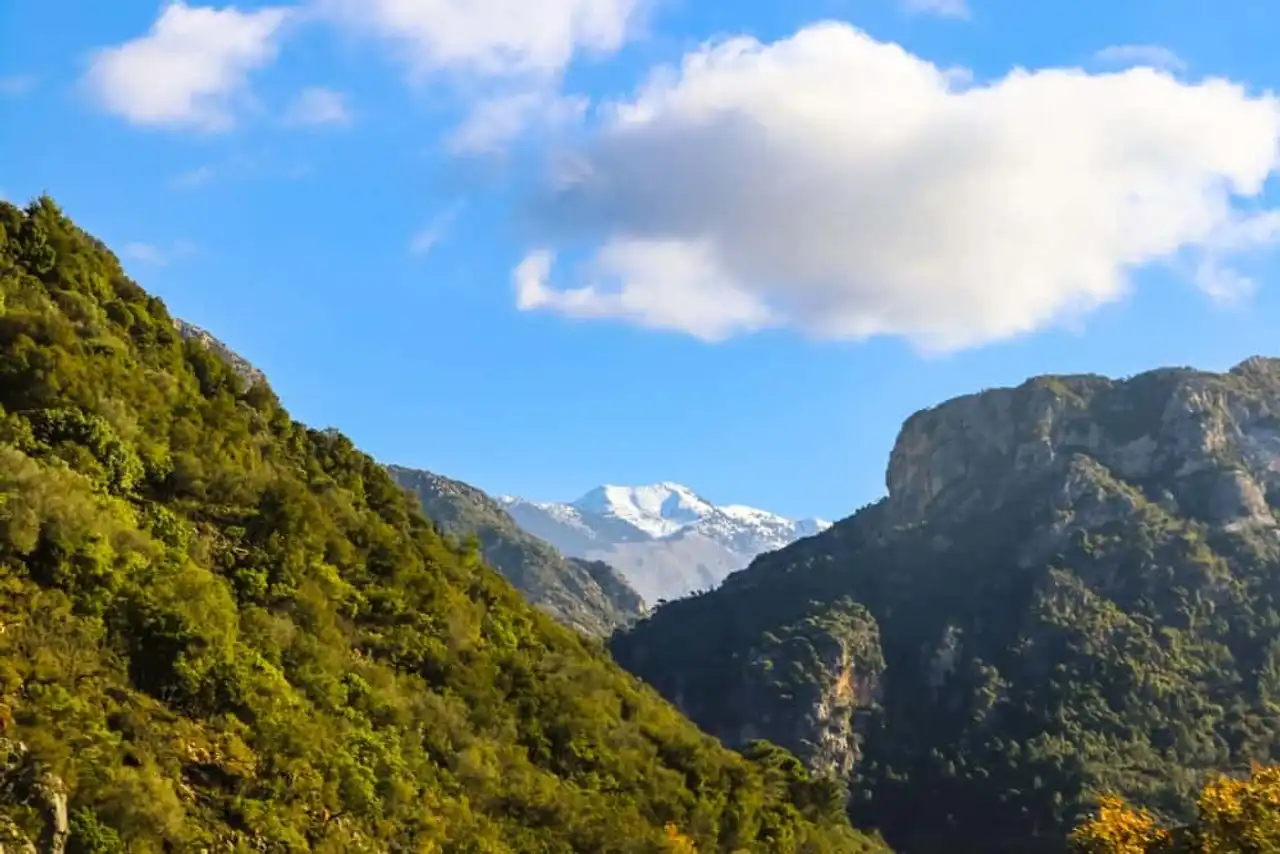
Photo credit: Shutterstock – Svineyard
What to do in Mistra as a sports outing? Why don't you take a walk on Mount Taygète. Combined with many myths, this sublime massif dominates the mountainous landscapes of the Peloponnese region. Its vegetation and monuments that punctuate its flank make the hike particularly exciting. The Mistra fortress can be found on its heights and the Metropolis at the level of its low entrance.
To travel the whole path, it will take about two hours (go back) and have appropriate shoes as the terrain can be difficult. Once you reach the top, you can contemplate an impressive panorama on the archaeological site and the Sparte plain.
If you want to continue your route on Mount Taygète, several rural trails will allow you to venture into the heart of the mountain.
How to get to Mistra?
By car
The journey between Paris and Mistra is longer than 3 000 km ! An adventure that only the bravest will have the daring to try. If you are road trip enthusiasts, this route will allow you to cross countries like Germany, Austria, Hungary, Serbia and Macedonia.
If you plan to access Greece through other means, know that the city of Mistra is located only 15 minutes Sparte road. Thus, this proximity allows it to be perfectly served by the highway of the Peloponnese which connects Corinth and Kalamata.
If you leave Athens , approximately 3 hours car to reach the city.
By plane
You can land at Sparte Airport or Athens Airport, two easily accessible airports from the major French and European cities. To enjoy the best prices, don’t hesitate to take a look at the flight comparison Skyscanner .
Once you arrive, you can either rent a vehicle or ride a bus to your destination. There are several routes a day between Athens and Sparta, as well as a Sparte-Mistra line. We recommend you car rental ,cela will allow you to visit Mistra and its surroundings with more freedom.
Where to stay in Mistra?
Located in the archaeological site, the current city of Mistra will be the perfect point of fall during your stay. On site, several accommodations such as Airbnb , hotels and holiday homes await you.
To find the best accommodation, think about an information about Compare hotels . This valuable help will allow you to find comfort adapted to your requirements (piscine, spa, restaurant, panoramic view...). It will take about 110€ for one night.
You now know that when you arrive in Mistra!




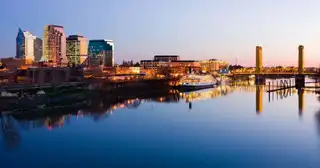
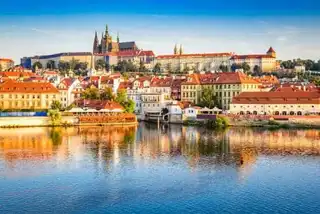
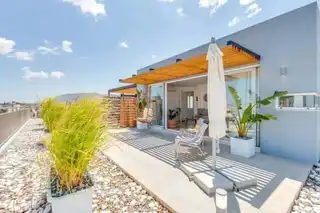
Loading comments ...